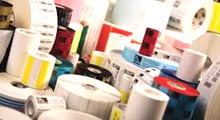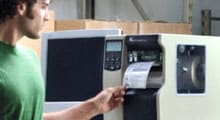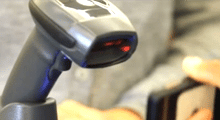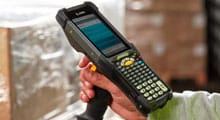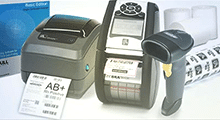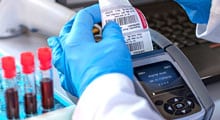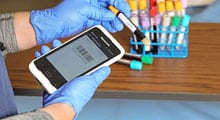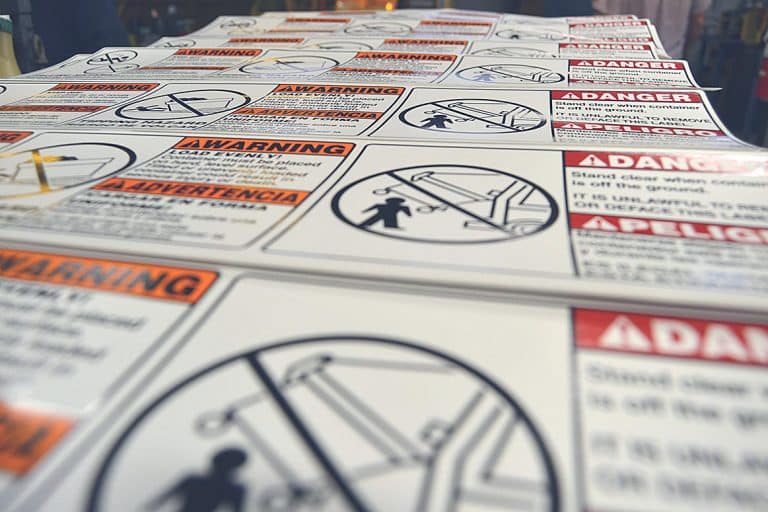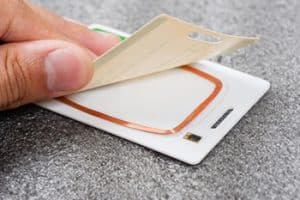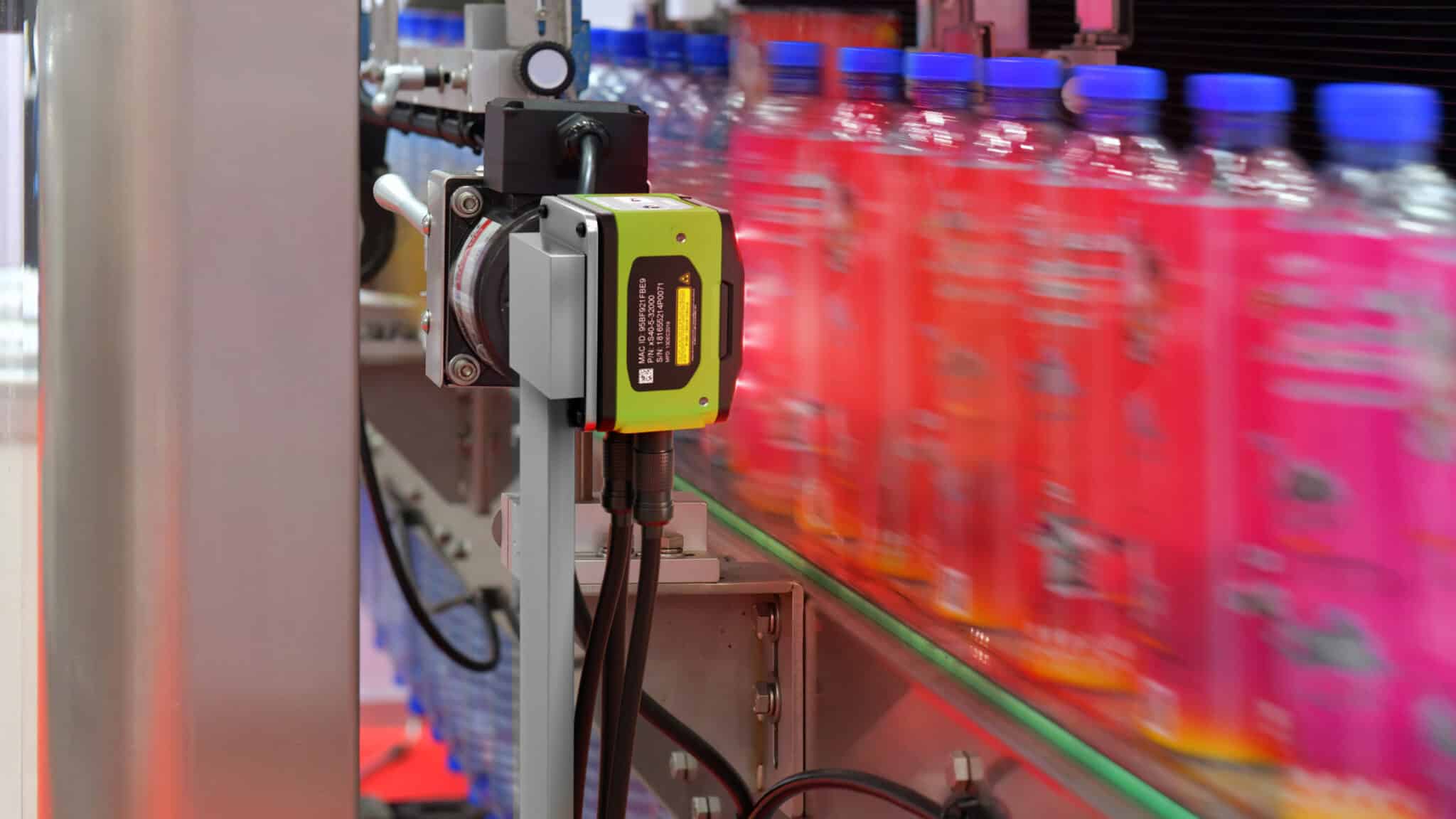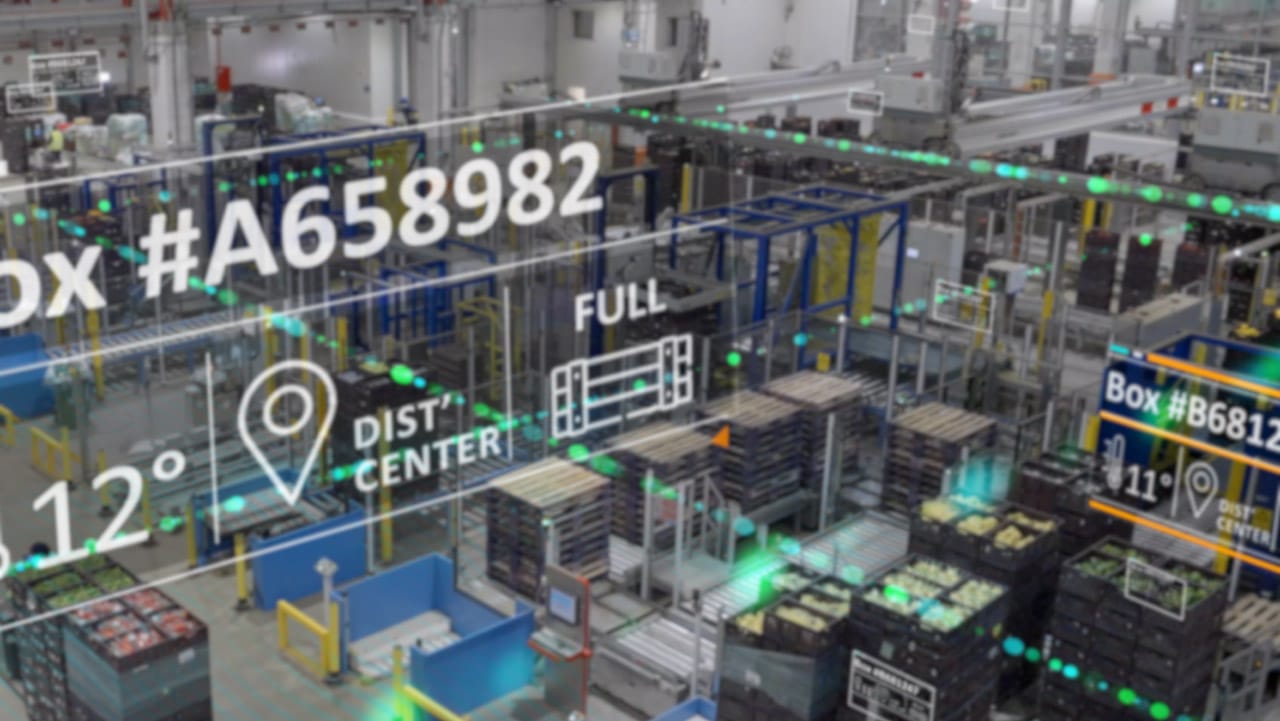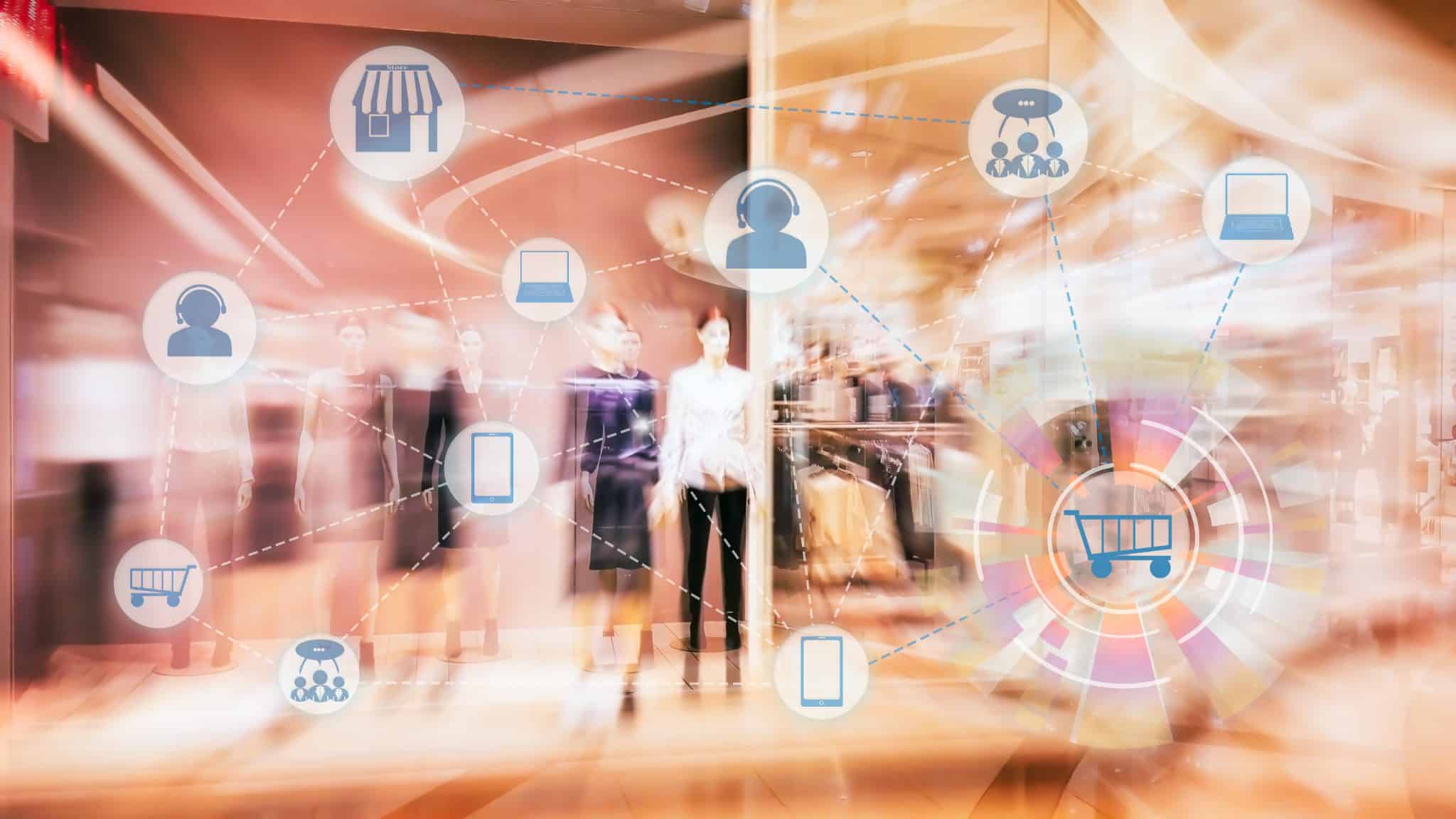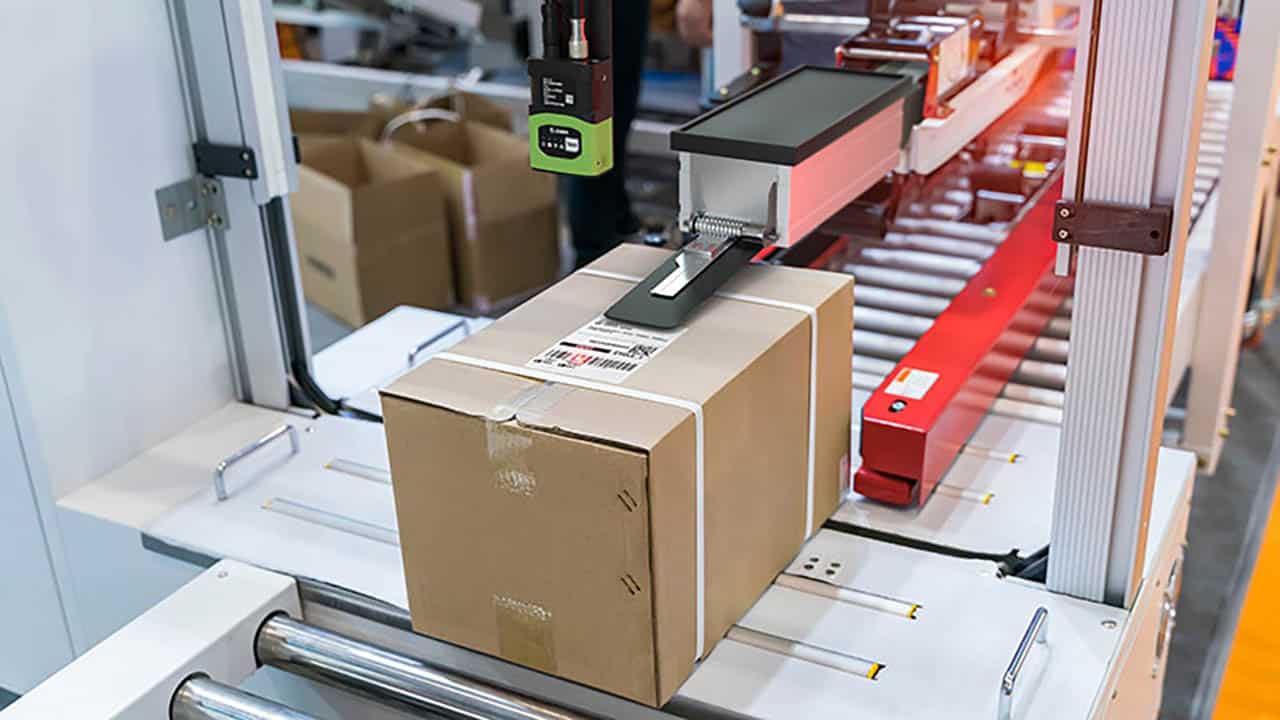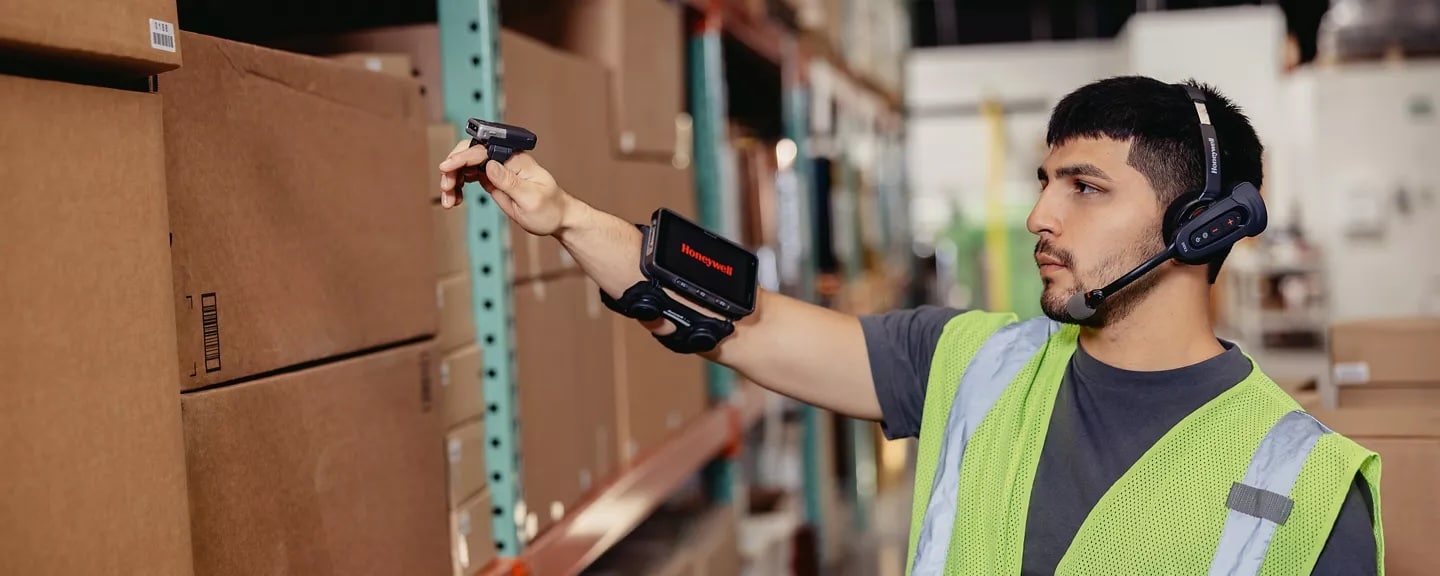Depending on how you plan to use the RFID or barcode technology, each has its own set of advantages and disadvantages to consider . A clear understanding of your requirements around security, durability, cost, and implementation of the system can help you evaluate the best option for your business.
In this article, we’ll:
- go over the main differences between RFID and barcoding,
- define both technologies in detail,
- outline what to consider when choosing,
- discuss each system’s advantages and disadvantages, and
- give some real-world examples to help with comparing the two technologies.
Peak Technologies also offers services related to both RFID and barcode printing and labeling, and one of our specialists can help you decide which system will best meet your needs.
"If RFID is truly more efficient, why hasn’t it replaced barcoding entirely? Like all technologies, RFID has its limitations – and so does barcoding."
What’s the Difference Between RFID and Barcode?
While barcode scanners require a line of sight to scan each code individually, RFID scanners can read multiple codes at once, which can help streamline operations. RFID systems are much more efficient for scanning a large number of items but can be more expensive and require more setup than barcodes. On the other hand, barcode systems can sometimes be more accurate but are less durable and secure than RFID.
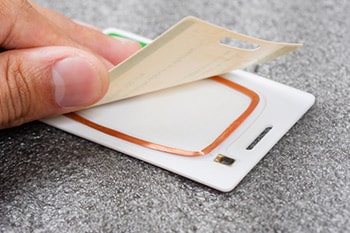
What is RFID?
RFID stands for radio-frequency identification, which uses radio waves to transmit information from RFID tags to an RFID reader. A tag contains a sensor attached to an antenna that enables the transmission of data to the reader. Each sensor typically contains unique identifiers, and a reader can simultaneously scan more than 100 tags and does not require line of sight visibility. This makes it easy to automate certain processes that would otherwise require extra time and resources, and be subject to human error.
Learn more about what RFID is and how it works.
What is barcoding?
Barcode scanning involves using a beam of light to “read” the black and white lines of a barcode. The scanner includes a sensor that creates a signal from the reflected light, and a decoder then translates the signal into text and sends it to a computer or database. Barcode scanners require line of sight and must “see” each barcode one at a time in order to capture the data.
Learn more about how barcodes work and the different formats.
Is RFID Better Than Using Barcodes?
On the surface, RFID seems like the clear choice. It can scan multiple items at once, whereas barcoding requires a person to physically scan each item individually. But if it is truly more efficient, why hasn’t it replaced barcoding entirely? Like all technologies, both have their own benefits and limitations, and it’s unlikely RFID will replace barcodes altogether anytime soon.
How to Choose Between RFID and Barcodes?
When it comes to choosing which system is right for your business needs, you’ll want to consider the following:
- What you’re tracking
- How secure you need the information you’re tracking to be
- How and where your inventory tracking will take place
- What your budget for this process looks like
Advantages & Disadvantages
Advantages of RFID
- Efficiency: Can scan multiple items at once
- Durability: Can handle exposure to sun and rain
- RFID allows for greater security than barcodes
Disadvantages of RFID
- Materials like metal and liquid can impact signal
- Sometimes not as accurate or reliable as barcode scanners
- Cost – RFID readers can be 10x more expensive than barcode readers
- Implementation can be difficult and time consuming
We go through the different types and use cases below, and how each of these pros and cons of RFID fits into real-life applications.
RFID Types & Use Cases
To understand the advantages and disadvantages of RFID, let’s take a closer look at some situations where it’s a better choice than barcoding.
RFID is available in three main types: low frequency (LF), high frequency (HF), and ultra-high frequency (UHF).
Low Frequency (LF)
Under 134.2 KHz. The low frequency range requires the tag to be in close contact with an RFID reader in order to transmit data.
Examples of Low Frequency RFID:
Animal tracking
Using RFID tags on cows’ ears offers a durable way to track the animal over a period of many years, from birth until it reaches the customer. In the event of contamination, grocery stores can determine exactly which batch of meat needs to be recalled and even which animal it came from.
In this scenario, these tags work best because they will last longer and are more durable than a barcode. With exposure to rain, sun, and other animals, a barcode can become damaged and unreadable, which isn’t ideal for long-term monitoring.

Access control
Low frequency RFID badges are commonly used as a “key” to control access to office buildings. Door badges must be placed very close to the reader in order to function properly. As with the animal tracking example above, these badges will be more durable over time than a printed barcode. ID badges with barcodes don’t offer much security either, because they can be easily duplicated with a copier.
High Frequency (HF)
Around 13.56 MHz. HF RFID tags have a read range of approximately one to three feet at the most.
Examples of High Frequency RFID:
Libraries
RFID technology can increase the efficiency of the book checkout and return process. At the checkout desk, you typically scan the barcode on your library card, and then stack your books on an RFID reader pad. The pad detects the tag embedded in each book. Later, when you return your books in the book drop, a reader can use the information in the tags to sort the books by category or location.
For libraries that are trying to do more with less, this technology offers a more accurate and efficient way to get books back out on the shelves. Barcoding would require an employee to scan each book separately during the checkout and return process, and if a barcode became unreadable as a result of scratches or marks, the item information would have to be entered manually into the computer system.
RFID also offers more security than barcoding in this situation. If someone is returning four books, they can easily scan the barcode on each one so that the system thinks they’ve been returned, but what if the person only drops off one book and keeps the other three? An RFID reader would immediately recognize the discrepancy.
Medical supplies
RFID can be used to monitor the use of surgical items while the patient is on the operating table. A system of checks and balances can help doctors and nurses keep track of how many sponges were used during surgery to make sure none are inadvertently left inside the patient. A reader can count the sponges before and after they’re used. If 20 sponges were “checked out,” the staff can make sure all 20 were “checked in” after the surgery is finished.
Quality control
RFID can be used to monitor the quality of wine from the time it leaves the winery through to the distribution center and the retailer. The tags can be programmed to monitor the temperature and other environmental factors that can affect the quality of the wine. If the data collected from the tag indicates that the wine was stored in a suboptimal environment for too long, it may be considered compromised and get pulled from the shelf. Whereas barcodes are read only, certain kinds of RFID tags can receive additional data after they are created.

Ultra-High Frequency (UHF)
800-900 MHz and higher. UHF RFID is typically used in large warehouses and distribution centers that need to track and identify multiple items at once.
Systems that use UHF RFID are not as mature as those used by LF and HF RFID frequencies. A standardized global bandwidth has not yet been determined, and the frequency range varies by country. The U.S. currently uses a higher UHF bandwidth than Europe.
Common applications for UHF RFID include shipping and receiving, end-to-end manufacturing, and industrial asset management. Unlike LF or HF, UHF offers a much longer read range of up to 30 feet in the right conditions. UHF wavelengths also allow data to be transferred more quickly, which means large volumes of product can be moved faster.
When receiving pallets or large cases, UHF RFID technology can speed up the process. A designated dock door can be equipped with RFID readers that are tuned to the same bandwidth as the tags on the items being received. With proper implementation to minimize interference, it can provide an accurate, efficient way to move items through the supply chain.
In these examples, RFID has clear advantages over barcodes when it comes to durability and longevity, security and efficiency. But this technology has disadvantages, too, and there are situations where barcoding is far more practical.
Learn more about RFID trends and future applications.
RFID Disadvantages
There are several limitations of RFID regarding materials, reliability, cost, and implementation.
Scanning Single vs Multiple Items
While RFID is well known for its ability to scan multiple items at once, this isn’t always an advantage when it comes to inventory management. In large warehouses, a reader can scan all tags within its range, which doesn’t work well if you’re only trying to scan items from a specific shipment or in a certain location on the floor.
If you have a pallet containing multiple boxes of different shapes and sizes, you need to know how many items are on the pallet so you can be certain you’ve scanned them all. Similar to our surgical sponge example above, if you know the pallet is supposed to have 30 items on it, you need to scan it from all angles until you’ve captured all 30.
To effectively use RFID in a warehouse or loading dock environment, you may need to use RFID blocks to form barriers between the readers, so that the same items aren’t scanned multiple times. In some cases, a block may be placed between each dock door to make sure only items at that particular entrance are being scanned.
While barcoding can’t scan multiple items at the same time, it offers more accuracy and reliability. Since a barcode scanner captures each code individually, you don’t have to worry about accidentally scanning more items than intended.
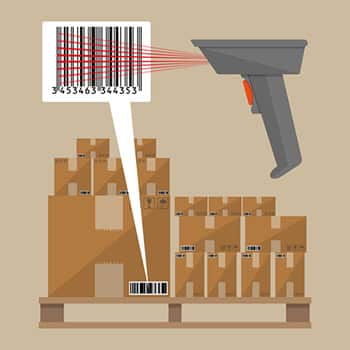
Material Limitations
RFID tags and labels are very specific to the type of material and size of your assets. For example, metal will deactivate the RFID antenna and the tag will not transmit at all. Using this technology on metal requires a special type of tag with a block to prevent interference with the antenna. Liquid products can also affect the reliability of the signal. If you’ve ever wondered why RFID is not used in grocery stores, this is the reason. Taking a metal shopping cart full of beverages through a reader will not yield an accurate or reliable scan.
With barcoding, you still need to consider the application and surface on which your label or tag will be used, but a barcode won’t simply become unreadable based on the material or contents of the item. RFID requires different types of tags depending on the characteristics of the item itself, whereas one type of barcode label can be used on different assets.
Cost Comparison
Cost is one of the main obstacles to RFID technology for many businesses. A typical barcode label costs a few cents each, while an RFID tag can run anywhere from $1 to over $30 depending on the type of tag you need. RFID readers are about ten times more expensive than barcode scanners. To print and encode the labels, you will need a printer like the Zebra ZT410R that is capable of doing both.
In addition to the cost of the tags and readers, the implementation is significantly more expensive and complex than a barcoding system.
Implementing RFID Tracking Solutions
Deploying an RFID system requires careful planning, along with a clear understanding of the technology capabilities and limitations. Most service providers, including Peak Technologies, require you to invest in a consultation and site survey to confirm whether an RFID solution will work for you. If you find a service provider willing to sell you this type of asset tracking system without doing these things, you probably shouldn’t purchase it from them.
Unlike basic barcoding where you can plug your USB scanner into your computer and get started, RFID is best implemented in stages. In a warehouse environment, start by deploying it at one dock door and then add more after you’ve tested it and confirmed that it works correctly for your application.
While RFID is a powerful technology, the implementation and use require careful planning. We have regular conversations with customers that think they need this type of system, but the complexity and expense is not feasible for their business. Whether you choose barcoding or RFID depends largely on the security and durability requirements of your application and the time and money that your business is prepared to spend.
To learn more, explore our Peak Technologies RFID services, and reach out to one of our specialists today.







